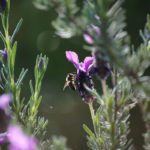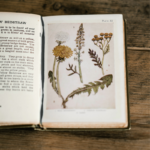The medicine maker’s stockroom is a beautiful thing – a space (however large or small) replete with healing herbs and the means to extract, administer, and create plant medicines of all varieties. Often nestled in the kitchen, one’s space may host bottled oils of gold and chartreuse, amber-toned jars of honey, infused vinegars in the vibrant hues of the plants they’ve … [Read more...] about An Herbalist’s Guide to Glycerin in Medicine Making
HOLISTIC SELF-CARE: 15 Harmonious Rituals to Relax + Awaken
When I was younger, I used to pride myself on an inaccurate picture of who I was and how I reacted to stress. I believed myself to be someone who was unaffected by stress: “I just don’t get stressed out. Stressful situations happen, but they just don’t get to me,” I would say, making full eye contact and believing myself thoroughly. What I came to realize later was that … [Read more...] about HOLISTIC SELF-CARE: 15 Harmonious Rituals to Relax + Awaken
Tools For The Burgeoning Herbalist
I was looking back on a post I wrote several months ago about How To Create A Bad-Ass Herbal Scrapbook, and I thought that a few more resources might be handy – so I made you some :) Firstly, I think the vocabulary of herbalism can be a little daunting at first. We use a lot of words to describe herbal actions and dosing patterns that aren't really part of everyday conversation … [Read more...] about Tools For The Burgeoning Herbalist
All In The Family: Meet The Mints
Lamiaceae – the "Mint Family" – is a group of roughly 3,500 species of plants with square stalks, simple opposite leaves. Their flowers are bisexual and irregular. Rich in volatile oils, mints are often aromatic, and many species are used as culinary herbs. Many are astringent, and some are bitter. Mint family plants have affinities for a range of systems - the digestive, … [Read more...] about All In The Family: Meet The Mints
Materia Medica 101: How To Create A Bad-Ass Herbal Scrapbook
Over the years, learning herbs has been one of my life's most rewarding experiences. Some of my fondest memories involve a giant blue IKEA bag filled with herb books (I took it with me to my husband/then-boyfriend's house for research, obviously), study groups with my closest friends (inventing herbal protocols for monsters), and spending time observing nature and freaking out … [Read more...] about Materia Medica 101: How To Create A Bad-Ass Herbal Scrapbook






